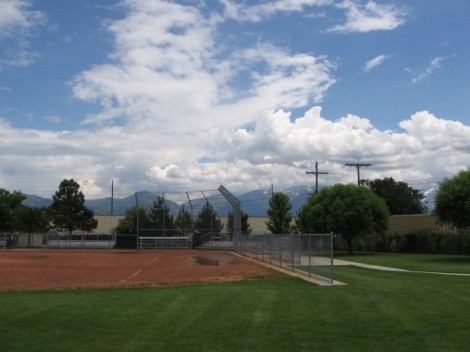
It may be all the rage for local government to “go green” these days in their policy-making, but in a green vs. green-policy match-up, what’s a city to do? This is the dilemma South Salt Lake city officials are currently running up against in their deliberations about selling a city park to the Utah Transit Authority as a site for a maintenance facility. City park advocates say South Salt Lake can’t afford to scrap what little green space it does have even if it helps the county’s public-transit infrastructure.
Paul Workman Park, at 2350 S. 910 West, is roughly 4.2 acres of multi-use open space with a baseball diamond, soccer field, bleachers and a playground, located alongside the Jordan River parkway. It’s also situated in the midst of a large commercial-industrial area and, for a time, had been a little-known secret. Since local valley softball leagues have started hosting games there, however, the popularity of the park has brought a group of concerned residents out to fight plans to sell the park to UTA.
“We’re just trying to shed some light on this [proposal] to the general public,” says Eileen Turnipseed, a frequent user of the park and one of the organizers of an informal group challenging the sale of the park. “Especially when we’re trying to convince our kids to put the video-game controller down and come out and play—and now they’re just going to come and pave this place over?”
Turnipseed, along with Leissa Roberts, both players on the Rocky Mountain League softball team, have so far collected 150 signatures protesting the city’s plans to sell the land. “It’s an absolutely beautiful park,” says Leissa Roberts. “It’s like this little hidden gem,” she says, adding that now on any given weekend, there might be several hundred people who use the park.
“It’s right in the middle of this asphalt jungle, so why would we want to destroy the green space we already have?” Roberts asks.
But it was the commercial nature of the neighborhood that sparked discussions with UTA and the city about a sale. “It’s very industrial in character,” says UTA spokesman Gerry Carpenter of the neighborhood around Workman Park. Carpenter says UTA received federal stimulus money to renovate a nearby building UTA acquired that was originally an old ZCMI warehouse, to be converted into secondary service center for new light-rail lines to be built in the area. Still, Carpenter says discussions about buying the park are simply preliminary.
“This is located in an area that, if the city did want to relocate their green space,” Carpenter says, “[Workman Park] would be a possible place we could expand.”
South Salt Lake City Attorney David Carlson doesn’t expect the issue of the sale to reach the South Salt Lake City Council until the end of this month. Carlson also says the sale won’t happen unless the city can find space to replace the park. But, Carlson says, he can see the merits in selling the land to UTA. “[Workman Park] is way out in an industrial area, and it’s never provided much use to our citizens,” he says, adding that “Most groups that use it are not from South Salt Lake and those making the most stir about it are not South Salt Lake residents.”
Carpenter says the city is scouting locations for a new park closer to residential centers in the city, but couldn’t discuss specifics.
For advocates like Turnipseed and Roberts, a park swap could be a fair compromise, but they say they’ll wait till they know where the city plans to relocate the park, noting that average cities have 2.5 acres of green space per 1,000 residents, while South Salt Lake only has 1.4. They also worry that losing the park will affect the value of the Jordan River Parkway, which the park abuts. For them, local policymakers’ decision will affect more than just the city’s residents.
“It’s not [just] about South Salt Lake,” says Turnipseed. “It’s about the valley as a whole.”